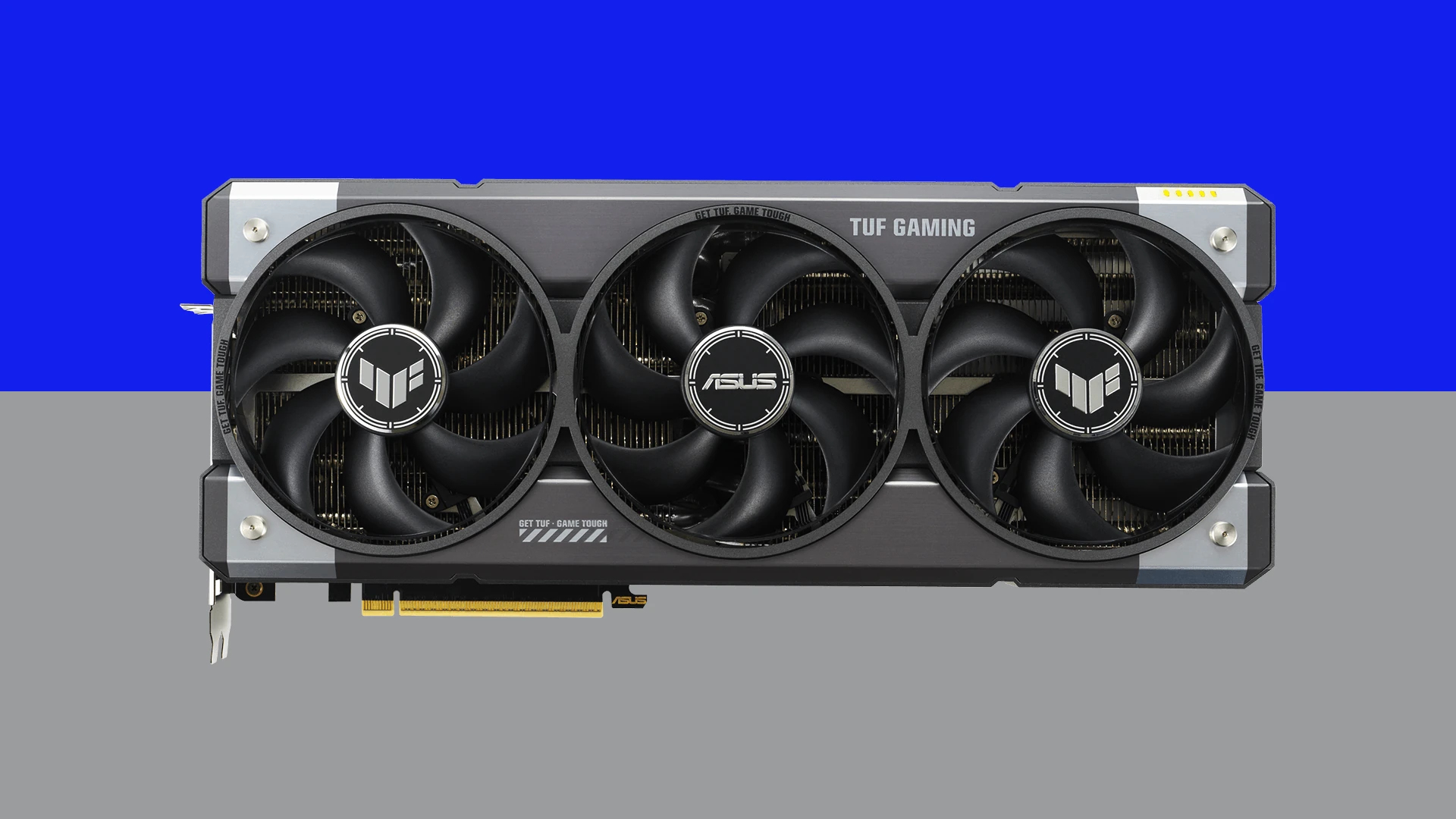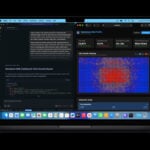Nvidia has finally released a fix for the black screen issues that have been plaguing RTX 50-series GPU owners. The new GeForce driver version 572.60 specifically (and sooner) addresses the frustrating problem that left many gamers staring at blank screens and experiencing frequent Blue Screens of Death (BSODs). This critical update resolves various black screen issues that have been rampant throughout the RTX 50 series since the previous 570 family of GPU drivers was released.
Users of Nvidia’s latest graphics card lineup can now breathe a sigh of relief as the company has delivered on its promise to fix these persistent display problems. The issues had become so widespread that some owners found themselves unable to properly use their expensive new hardware. Reports indicate that the black screen glitches affected users across different applications and scenarios, creating a significant frustration for early adopters of the new technology.
The 572.60 driver not only fixes the black screen problems but also addresses several other bugs reported by users. This update represents an important step in stabilizing the performance of the RTX 50 series, which has otherwise been praised for its impressive graphical capabilities and performance improvements over previous generations.
Latest NVIDIA GeForce RTX Drivers
Here is information on the latest Nvidia drivers as of the end of March 2025: Link
GeForce Game Ready Driver 572.83 | Windows 11
Drivers Home > NVIDIA GeForce RTX 5090 | Windows 11 > GeForce Game Ready DriverDriver Version: 572.83 | WHQL
Release Date: Tue Mar 18, 2025
Operating System: Windows 10 64-bit,
Windows 11
Language: English (US)
File Size: 845.3 MB
*This download includes the NVIDIA graphics driver and an option to additionally install the NVIDIA App. Details for use of the software can be found in the NVIDIA GeForce Software license and NVIDIA App License Agreement respectively.Download
Get Automatic Driver Updates
The NVIDIA App is the essential companion for PC gamers and creators. Keep your PC up to date with the latest NVIDIA drivers and technology.NVIDIA App
Release Highlights
Supported Products
Additional Information
Game Ready for Half-Life 2 RTX Demo and inZOIThis new Game Ready Driver supports the new GeForce RTX 5070 Ti GPU and provides the best gaming experience for the latest new games supporting DLSS 4 technology including the Half-Life 2 RTX Demo and Warhammer 40,000: Darktide. Further support for titles leveraging DLSS technology includes Assassin’s Creed Shadows, The Last of Us Part II Remastered, and the enhanced update for Control. In addition, this driver supports inZOI which features the first integration of NVIDIA ACE technology.
Gaming Technology
Adds support for GeForce RTX 5090, 5080, and 5070 Ti notebooksFixed Gaming Bugs
N/AFixed General Bugs
[GeForce RTX 5080/5090] Graphics cards may not run at full speeds on system reboot when overclocked [5088034]
[GeForce RTX 50 series] GeForce RTX 50 series GPUs crashes with black screen [5120886]
Some NVIDIA Control Panel / NVIDIA App settings changes immediately get reset or give error [5160516]
PC may bugcheck IRQL NOT LESS OR EQUAL 0xa during gameplay with HDR enabled [5091576]
[VRED 2026] Optix compile error with R570 branch drivers [5122360]
[Derivative TouchDesigner ] Application stability issues [4606316]Learn more in our Game Ready Driver article here.
Game Ready Driver
HL2 RTX
Games | Product
Half-Life 2 RTX
Demo with full ray tracing and DLSS 4 available now.NVIDIA DLSS
Games | Announcement
NVIDIA DLSS
Accelerating performance in your favorite games.
Driver Updates Target Black Screen Fixes on RTX 50-Series GPUs
Following widespread user reports of black screen issues plaguing NVIDIA’s RTX 50-series graphics cards, the company has been rolling out a series of driver updates aimed at fixing the problem. The black screen bug has been most commonly reported on RTX 5090 and RTX 5070 Ti units, but some users on other 50-series models have also experienced sporadic display loss during boot or gameplay—especially when using DisplayPort connections or enabling Multi-Frame Generation (MFG) features.
The 572.60 Game Ready Driver: The First Big Step
The first major attempt to squash the issue came in late February with the release of driver version 572.60. In addition to enabling support for new game titles and an impressive expansion of G-Sync-compatible displays (29 models added), this update specifically targeted a scenario where users would encounter a black screen on boot or during transitions between full-screen and windowed mode. In many cases, this driver update improved system stability, but it didn’t fully eliminate the issue for everyone.

https://www.nvidia.com/en-us/drivers
Hotfix 572.65: A Rapid Response to Persistent Problems
After the 572.60 release, NVIDIA issued a hotfix driver (version 572.65) to address lingering issues, particularly those affecting DisplayPort users who would boot to a black screen or experience intermittent signal loss. The hotfix included tweaks to how RTX 50-series cards initialized displays during startup, which helped reduce failures related to handshake protocols on high-refresh monitors. However, this too proved to be an incomplete fix—especially for users employing advanced display tech or overclocked configurations.
Mid-March Update: Driver 572.83 Pushes Closer to Full Resolution
The latest major update, driver version 572.83, took a more comprehensive approach. It not only addressed black screen crashes but also tackled overclocking instability that had been reported by enthusiasts pushing their cards near the thermal or power limits. NVIDIA also included expanded DLSS 4 support, day-one game readiness for multiple upcoming releases, and continued optimizations for Frame Generation features. This version significantly improved the situation for the majority of affected users, especially those using RTX 5090 units with high-end 4K or ultrawide monitors.
What’s Actually Causing the Black Screen Bug?
The root cause of the issue appears to be multi-layered. While initially suspected to be a driver-level oversight, further investigation revealed that a rare manufacturing quirk in select batches of RTX 5090 and 5070 Ti GPUs may have contributed to instability under certain monitor configurations. This is particularly true for systems using DisplayPort 1.4 or DSC-enabled displays, where signal timing issues and VRAM power draw spikes could cause the GPU to temporarily shut off display output.
NVIDIA has acknowledged this rare hardware-level issue but maintains that for most users, software fixes should resolve the problem without requiring an RMA. Still, some users with persistent black screens—especially those with specific high-refresh G-Sync monitors—have had to rely on BIOS updates or even return their cards for replacements.
What You Should Do Now
- Update to the latest driver: Download and install version 572.83 (or later) via GeForce Experience or NVIDIA’s website.
- Switch to HDMI temporarily: If you’re still experiencing issues via DisplayPort, using an HDMI 2.1 cable may offer better stability while waiting for a permanent fix.
- Disable Multi-Frame Generation: In systems where MFG is causing instability, turning it off may immediately reduce black screen occurrences.
- Check for firmware updates: Monitor manufacturers like LG, ASUS, and Acer have also released display firmware updates to improve compatibility with RTX 50-series cards.
Still Experiencing Issues?
If you’ve updated your drivers and are still seeing black screens, NVIDIA recommends submitting a detailed bug report including your monitor model, cable type, resolution/refresh settings, and whether overclocking is enabled. You may also want to check for BIOS updates from your motherboard manufacturer, as power delivery inconsistencies in some boards may exacerbate GPU stability issues.
NVIDIA’s Ongoing Work and Future Fixes
While driver 572.83 has stabilized things for most users, NVIDIA is not calling it a complete resolution yet. Engineers are reportedly continuing to investigate edge cases, and an additional update is expected before the end of Q2 2025 to target remaining bugs affecting DisplayPort detection and signal sync on cold boots.
In the meantime, the situation is steadily improving. Enthusiasts who have endured frustrating display loss or required repeated reboots are finally getting relief. With future updates in the pipeline and firmware cooperation from third-party monitor makers, it’s likely that the black screen saga for the RTX 50-series is nearing its conclusion.
Key Takeaways
- The new GeForce driver 572.60 fixes widespread black screen issues and BSODs affecting RTX 50-series GPUs.
- Users experiencing black screen problems should immediately update to the latest driver version for a stable gaming experience.
- The fix comes after numerous user reports of display failures following the problematic 570 family of drivers.
Understanding the RTX 50-Series GPUs
NVIDIA’s RTX 50-Series GPUs represent the company’s latest generation of graphics processing technology based on the Blackwell architecture. These cards offer significant performance improvements while introducing new features like DLSS 4 support.
Architecture and Innovations
The RTX 50-Series GPUs utilize NVIDIA’s Blackwell architecture, which succeeds the Ada Lovelace architecture found in the RTX 40-Series. These new GPUs feature enhanced ray tracing cores that deliver more realistic lighting and shadow effects in games. The tensor cores have been upgraded to provide better AI performance, which is crucial for DLSS 4 technology.
DLSS 4, or Deep Learning Super Sampling 4, represents a significant advancement over previous versions. It uses AI to upscale lower-resolution images to higher resolutions with improved quality while maintaining higher frame rates. This technology is particularly valuable for demanding games that utilize ray tracing.
The 50-Series GPUs also come with improved CUDA cores, which help with general computing tasks. These improvements allow the cards to handle more complex calculations faster than previous generations.
Market Impact and Adoption
The RTX 50-Series launch has generated significant interest among gamers and content creators despite some initial technical issues. High-end models like the RTX 5090 and RTX 5080 target enthusiasts seeking maximum performance, while other models in the lineup cater to different market segments and price points.
Game developers have begun optimizing their titles to take advantage of the new hardware capabilities. Titles like Naraka: Bladepoint have already implemented DLSS 4 support through driver updates.
Early adoption faced challenges due to reported black screen issues and system crashes. These problems affected not only the new RTX 50-Series cards but some RTX 40-Series users as well. NVIDIA has responded with driver updates, most recently with version 572.60, which addresses many of these stability concerns.
The market reception remains strong despite these early challenges, with many users reporting significant performance gains in ray-tracing enabled applications.
Identifying Black Screen Issues
Black screen issues with RTX 50-Series GPUs have manifested in various ways for users. Understanding the symptoms and distinguishing between hardware and software problems can help troubleshoot these frustrating experiences before applying the latest driver fixes.
Common Symptoms and Scenarios
Black screen problems typically occur in several distinct scenarios. Many users report their monitors going completely dark during gaming sessions while audio continues to play in the background. This often happens without warning and requires a system restart to recover.
Some experience black screens immediately after Windows loads or when launching specific applications. These issues may be accompanied by system crashes or Blue Screens of Death (BSODs) as mentioned in the search results.
Other symptoms include image corruption with pixelated 2D patterns appearing briefly before the screen goes black. Texture corruption in games has also been reported, where game assets display incorrectly before system failure.
Display stuttering often precedes black screen events, with frames freezing momentarily before the screen goes dark. In some cases, audio continues but becomes distorted or cuts out entirely.
Hardware vs Software-Related Problems
Distinguishing between hardware and software causes is crucial for effective troubleshooting. Software-related black screens are typically resolved with driver updates, as evidenced by Nvidia’s 572.60 driver release specifically targeting “various black screen issues.”
Hardware problems are less common but potentially more serious. Overheating can trigger protective shutdowns that manifest as black screens. Users should monitor GPU temperatures during use to identify this issue.
Common software-related causes:
- Outdated or corrupted GPU drivers
- Incompatible game or application versions
- Windows update conflicts
Potential hardware-related causes:
- Power delivery issues (insufficient PSU)
- Improper GPU seating in PCIe slot
- Overheating due to poor airflow
MSI’s vBIOS fix through their MSI Center app suggests some issues stem from firmware rather than drivers alone. This indicates deeper system-level compatibility problems between the GPU firmware and software environments. Most users find that applying both vBIOS updates and the latest Nvidia drivers provides the most complete solution.
Initial Troubleshooting Steps
Before pursuing driver updates for RTX 50-series black screen issues, users should first attempt several basic troubleshooting methods. These preliminary steps can often resolve display problems without requiring software changes.
Checking Cable Connections
When experiencing black screen issues with an RTX 50-series GPU, the first step is inspecting all physical connections. Users should ensure that DisplayPort or HDMI cables are firmly seated at both ends.
Poor cable connections are a common cause of intermittent black screens or no signal errors. For the RTX 50-series specifically, using high-quality DisplayPort 1.4 cables is recommended for optimal performance and stability.
Trying an alternative port on the GPU can help determine if the issue is port-specific. Some users have reported that switching from a DisplayPort connection to HDMI temporarily resolves black screen problems until driver fixes are applied.
Additionally, inspect cables for physical damage, bends, or kinks that might affect signal quality.
Adjusting Refresh Rate Settings
Many black screen issues with RTX 50-series GPUs occur at high refresh rates. Temporarily reducing monitor refresh rates from 144Hz, 240Hz, or higher to 60Hz may stabilize the display until driver updates are installed.
To adjust these settings:
- Right-click on desktop and select Display Settings
- Scroll down and click Advanced Display Settings
- Select Display Adapter Properties
- Navigate to the Monitor tab
- Use the dropdown menu to select a lower refresh rate
- Click Apply and OK
Some users have reported that disabling G-Sync or FreeSync technologies temporarily can also prevent black screen occurrences with the RTX 50-series GPUs.
Verifying Power Supply Stability
RTX 50-series GPUs require stable, sufficient power to function properly. Inadequate or unstable power delivery can cause black screens, especially during high-load scenarios like gaming.
Check that all power connectors to the GPU are firmly connected. The RTX 50-series requires proper connection of 12VHPWR or 8-pin PCIe power cables depending on the model.
Users should verify their power supply meets the minimum requirements:
- RTX 5090: 1000W recommended
- RTX 5080: 850W recommended
- RTX 5070: 750W recommended
Power issues often manifest during gaming or benchmark tests. Using monitoring software to observe voltage stability can help identify potential power-related black screen causes. If fluctuations are detected, testing with a different power supply may be necessary before assuming driver issues.
Comprehensive Solutions to Black Screen Issues
Resolving RTX 50-series black screen problems requires a multi-faceted approach that addresses hardware firmware, software settings, and driver configurations. Multiple solutions have emerged from both Nvidia and board partners to tackle these persistent issues.
BIOS and VBIOS Update Guidelines
Motherboard BIOS updates can significantly improve GPU compatibility with RTX 50-series cards. Users should check their motherboard manufacturer’s website for the latest BIOS version that includes specific RTX 50-series support.
Several GPU manufacturers have released targeted vBIOS updates to address black screen issues. MSI has implemented a solution accessible through their MSI Center application, making the update process straightforward for users experiencing problems.
When applying vBIOS updates:
- Back up your current vBIOS version
- Ensure stable power during the update process
- Follow manufacturer-specific instructions precisely
- Restart your system after completion
These firmware updates modify how the GPU handles power states and display connections, often resolving the black screen issues without requiring additional software changes.
Optimizing Nvidia Control Panel Settings
Several Control Panel adjustments can help mitigate black screen occurrences:
Power Management Mode: Set to “Prefer Maximum Performance” to prevent aggressive power-saving features that might trigger black screens.
Low Latency Mode: Setting this to “Off” or “Normal” rather than “Ultra” can improve stability for affected systems.
Multi-Display Power Saver: Disable this feature if you’re using multiple monitors, as it’s been identified as a potential trigger for display issues.
Users should also create separate application profiles for problematic games rather than changing global settings. This approach maintains optimal performance while addressing specific application conflicts.
Driver Rollback and Reinstallation Techniques
Nvidia’s GeForce 572.60 driver specifically addresses black screen issues affecting RTX 50-series cards. This update includes targeted fixes for display connectivity and power state management problems.
For proper driver installation:
- Use DDU (Display Driver Uninstaller) in Safe Mode to completely remove previous drivers
- Restart in normal mode
- Install the 572.60 driver or later
- Select “Clean Installation” during setup
If problems persist after updating, rolling back to the last stable driver version before the 570 branch may provide temporary relief. Some users report better results by installing only the core driver components without GeForce Experience or other optional features.
Impact of Driver Update 572.60
NVIDIA’s latest GeForce Driver 572.60 addresses critical issues affecting RTX 50-series graphics cards while introducing improvements for both stability and functionality. This driver release specifically targets the troublesome black screen problems that many users have experienced since the launch of the new GPU series.
Resolved Issues and Performance Improvements
The GeForce 572.60 driver primarily fixes “various black screen issues” plaguing RTX 50-series cards. These problems (identified by internal tracking codes 5088957, 5100062, and 5089089) left many gamers staring at blank screens instead of enjoying their high-end hardware.
The update also resolves audio issues occurring when GPUs are connected via DisplayPort 1.4 with Display Stream Compression (DSC) at very high refresh rates. This fix (tracking code 5104848) is particularly important for competitive gamers who rely on high refresh rates for smooth gameplay.
Performance stability has improved across several applications. CUDA VPath tests now run more consistently, benefiting developers and professional users who rely on NVIDIA’s CUDA technology for computational tasks.
New Features and Support Added
The 572.60 driver comes with the “Game Ready” designation, ensuring optimal performance for the latest game releases. This certification means the driver has undergone extensive testing with current titles to maximize frame rates and minimize latency.
The update brings enhanced DLSS 4 support, NVIDIA’s AI-powered upscaling technology that delivers better image quality at higher frame rates. This improvement allows RTX 50-series owners to fully utilize one of the key selling points of their new hardware.
Professional applications receive attention too, with optimized support for Adobe Substance 3D Painter and Vray 6. These improvements are valuable for 3D artists and designers who depend on GPU acceleration for their workflow.
The driver has earned WHQL certification, indicating it passed Microsoft’s Windows Hardware Quality Labs testing. This certification provides users additional confidence in the driver’s stability and compatibility with Windows systems.
Advanced Troubleshooting Techniques
When standard fixes fail to resolve black screen issues with RTX 50-series GPUs, users can employ several advanced methods to diagnose and solve their problems. These approaches leverage both official Nvidia resources and community-developed solutions.
Utilizing Nvidia Support and Community Forums
Users experiencing persistent black screen issues should first check the official Nvidia support portal. The dedicated troubleshooting section contains GPU-specific guidance that may address unique RTX 50-series problems.
Creating a detailed support ticket with system specifications, driver versions, and exact symptoms helps Nvidia technicians provide targeted assistance. Including crash logs from Windows Event Viewer can significantly speed up diagnosis.
The Nvidia GeForce forums host active discussions where users share successful fixes for black screen issues. Many community members have documented workarounds before official patches are released. For example, some users found success by disabling hardware acceleration in browsers and communication apps like Discord.
Gaming-specific forums often contain game-by-game troubleshooting guides for titles that trigger black screens on RTX 50-series cards.
Exploring Third-Party Software Fixes
Several third-party utilities can help diagnose and repair issues when official drivers don’t resolve black screen problems. DDU (Display Driver Uninstaller) remains the gold standard for completely removing GPU drivers when standard uninstallation fails.
MSI Afterburner allows users to underclock their RTX 50-series GPUs slightly, which has proven effective in preventing black screens during intensive gaming sessions. Setting power limits to 90-95% often maintains performance while improving stability.
Hardware monitoring tools like HWiNFO can help identify if black screens coincide with temperature spikes or power fluctuations. This data helps determine if the issue is hardware or software-related.
For users experiencing black screens during specific games, compatibility tools like Special K provide DirectX wrappers that bypass problematic rendering paths in certain titles while maintaining visual quality.
Gaming and Software Compatibility
The RTX 50-series driver updates have significantly improved how these GPUs interact with games and creative applications. The fixes address not only black screen issues but also enhance performance across various software environments.
Optimizations for Specific Titles
Several major game titles have received targeted optimizations with the latest 572.60 driver. Monster Hunter Wilds now runs without the black screen interruptions that plagued early adopters. Players reported smoother frame rates and more stable gameplay after installing the update.
Naraka: Bladepoint users will notice improved stability during intense battle sequences. The previous driver version caused random black screens during graphically demanding moments, frustrating competitive players.
SteamVR compatibility has been substantially enhanced. VR gamers experienced black screens and sudden disconnections with the initial RTX 50-series drivers. The new driver resolves these issues while improving frame timing for a more comfortable VR experience.
The driver also fixes BSOD (Blue Screen of Death) errors that occurred when switching between certain games or running games in borderless windowed mode.
Compatibility with Creative Applications
Adobe Substance 3D performance has improved dramatically with the latest driver update. 3D artists using RTX 50-series cards reported black screens when rendering complex materials, an issue now resolved with driver 572.60.
Adobe Substance 3D Sampler users benefit from more stable texture generation. The previous driver would occasionally cause the application to freeze or display black screens when processing multiple textures simultaneously.
Creative professionals will appreciate the improved multi-monitor support. Previous driver versions sometimes caused secondary displays to go black when running GPU-intensive applications.
The updated driver includes optimizations for GPU-accelerated video encoding and decoding. Content creators working with high-resolution video will experience fewer interruptions and more consistent performance when editing and exporting projects.
Technical Specifications and Future Developments
The RTX 50-Series GPUs based on NVIDIA’s Blackwell architecture represent a significant leap in performance capabilities, with enhanced specifications addressing previous issues while introducing new technical achievements.
RTX 5090 and Beyond
The flagship RTX 5090 delivers impressive specifications with up to 8x faster frame rates when utilizing DLSS 4 technology. This top-tier GPU features enhanced AI performance, delivering up to 3,352 AI trillion operations according to NVIDIA’s documentation.
The architecture addresses the black screen and BSOD issues that initially plagued the series through driver optimizations. The latest GeForce 572.47 WHQL drivers specifically target these stability concerns.
All RTX 50-Series cards offer full PCIe 5.0 support, providing increased bandwidth for data transfer between components. This helps maximize performance in both gaming and AI workloads.
Several models experienced ROP (Render Output Units) discrepancies upon release, which NVIDIA acknowledged and corrected in subsequent production batches.
Potential Roadmap and Expectations
NVIDIA appears committed to expanding the Blackwell-based lineup beyond the initial 5090 and 5080 releases. Industry analysts predict mid-range options like the RTX 5070 and budget-friendly 5050 to arrive by mid-2025.
These forthcoming models will likely maintain the neural rendering capabilities and RTX neural shader enhancements introduced in the higher-end cards. DLSS 4 support remains central to NVIDIA’s strategy across all tiers.
Reflex 2 technology for reduced latency will be standardized throughout the lineup, particularly beneficial for competitive gaming scenarios. The technology reduces input lag and provides faster response times in supported titles.
Potential improvements to creator-focused tools are expected in future driver updates, enhancing the utility of these cards beyond just gaming applications.
Frequently Asked Questions
The black screen issues with RTX 50-Series GPUs have affected many users since launch. Nvidia has recently released driver updates to address these problems, but users still have common questions about resolving these issues.
How do I resolve a persistent black screen after installing an RTX 50-Series GPU?
For persistent black screen issues with RTX 50-Series GPUs, users should first ensure their system is booting into safe mode by pressing F8 during startup. Once in safe mode, uninstalling the current GPU drivers using Display Driver Uninstaller (DDU) will remove any corrupted driver files.
After a system restart, installing the latest 572.60 driver or newer directly from Nvidia’s website should resolve most black screen issues. Some manufacturers like MSI also offer vBIOS updates through their proprietary software that address firmware-level problems causing black screens.
If problems persist, checking power connections and ensuring the GPU is properly seated in the PCIe slot can eliminate hardware-related causes.
What are the steps to correctly update drivers for an RTX 50-Series GPU to fix black screen problems?
First, download the latest Nvidia driver (version 572.60 or newer) from Nvidia’s official website. These newer drivers specifically address the black screen issues affecting RTX 50-Series cards.
Before installation, use Display Driver Uninstaller (DDU) in safe mode to completely remove existing graphics drivers. This prevents conflicts between old and new driver files.
After rebooting, install the new driver package and select “Clean Installation” when prompted. This option removes previous settings that might contribute to black screen problems.
Are there any known compatibility issues with RTX 50-Series GPUs that may cause black screen errors?
Some users have reported compatibility issues between RTX 50-Series GPUs and older motherboards or power supplies. Systems with insufficient power delivery or outdated BIOS versions are particularly susceptible to black screen problems.
Certain third-party software that interfaces with GPU functions, particularly overclocking utilities and RGB control applications, have been identified as triggers for black screen issues on RTX 50-Series cards. Temporarily disabling these programs can help isolate the cause.
Some users have also noted conflicts between RTX 50-Series cards and specific monitor models when using DisplayPort connections, which can be resolved by using HDMI temporarily until driver updates address the issue.
What troubleshooting methods should be followed when experiencing black screens with the RTX 50-Series GPUs?
Start by performing a clean driver installation using the latest Nvidia driver (572.60 or newer). If black screens persist, try booting into safe mode and running system diagnostics.
Check all power connections, ensuring the GPU is receiving proper power through correctly seated PCIe power connectors. For higher-end RTX 50-Series models, verify that your power supply meets the recommended wattage requirements.
Disable any GPU overclocking settings, including factory overclocks through software like MSI Afterburner or EVGA Precision. Return the card to stock settings as unstable overclocks can trigger black screens.
Testing the GPU in a different PCIe slot or different system can help determine if the issue is related to the card itself or system configuration.
Is there a specific version of the graphics driver that fixes the black screen issue on RTX 50-Series GPUs?
Yes, Nvidia’s driver version 572.60 specifically addresses “various black screen issues” affecting RTX 50-Series cards. This driver was released after Nvidia acknowledged and investigated the widespread reports of black screens and system crashes.
Earlier driver versions in the 570 family were identified as the source of many black screen problems. The 572.60 release contains firmware-level fixes that correct the issues that plagued early RTX 50-Series adopters.
Manufacturer-specific vBIOS updates also complement Nvidia’s driver fixes. MSI, for example, has released vBIOS updates through MSI Center that address black screen issues at the firmware level.
After updating to the latest graphics driver, my RTX 50-Series GPU is still displaying a black screen; what should I do next?
If black screens persist after updating to the latest drivers, check for system BIOS updates from the motherboard manufacturer. Outdated BIOS versions may have compatibility issues with RTX 50-Series GPUs.
Contact the GPU manufacturer’s technical support with detailed information about the system configuration and the specific circumstances when black screens occur. They may offer advanced troubleshooting or RMA options if the card is defective.
Try connecting the monitor to a different port on the GPU or using a different cable type (HDMI instead of DisplayPort or vice versa). Some users have reported that specific connection methods resolve persistent black screen issues while manufacturers work on permanent fixes.







